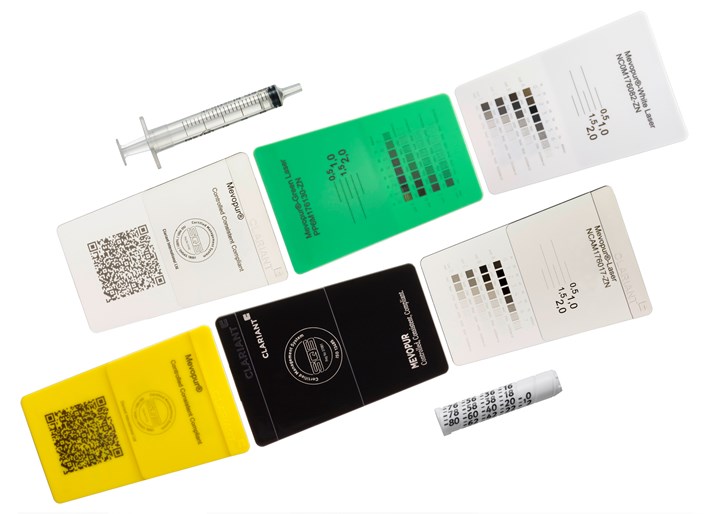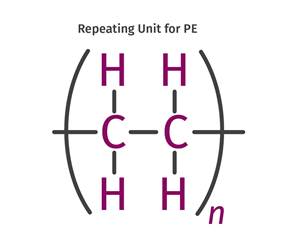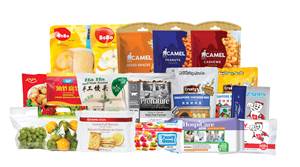Materials: Medical-Grade Compounds and Concentrates for Laser Welding
Clariant supports a ‘Quality by Design’ approach to laser welding of medical devices.
Medical-grade polymer compounds and concentrates for laser-welding developed by Clariant Healthcare Polymer Solutions, Charlotte, N.C, are supported by formulation expertise that can help medical-device manufacturers take a ‘Quality by Design’ (QbD) approach to laser-welding of plastic components. Featured at MD&M West 2020, they expand Clariant’s portfolio of Mevopur ‘medical grade’ materials.
Laser-welding offers numerous advantages in medical and diagnostic applications in terms of speed and reliability. Yet, if the combination of polymer, colorants, part design and processing techniques are not considered in the earliest stages of product development, weld consistency can suffer, and the risk of product failure may become unacceptable, according to global head of marketing & 大象传媒 development Steve Duckworth. Laser welding can develop a high-strength bond without many of the disadvantages of other methods. For example, surfaces do not require pre-treatment and the risk of creating potential leachables from solvent residues or adhesive is eliminated. In addition, high-speed joining of even complex geometries is possible with minimal stress in the joints. Welded components can survive repeated sterilization, if necessary.
However, color choices play a critical role in the ability of one part to transmit laser energy, and the other to absorb laser energy and melt at the bond line. In many applications, color decisions are taken only in the later stages of the development cycle by the marketing team or others not involved in the functional design process. When laser welding. Explains Duckworth, “Traditional approaches to coloration may not work. For example, having a visually opaque black or very dark color that typically uses carbon black would not perform in the laser-transmitting component. Neither would a white component, where a typical pigment used is titanium dioxide.”

Duckworth explains that this is the reason why Clariant takes a ‘QbD’ approach with its customers. “Our team of experts has a thorough knowledge of pigment and additive options for absorbing and transmitting parts, so we can give different color options in a wide range of polymers including PP, ABS, PC, PC/ABS blends and more. In collaboration with laser equipment suppliers, we’ve developed analytical techniques that can be used to screen different solutions to find the best one.”
Once an optimal color has been selected, the distribution of pigments and additives in the plastic component and part-to-part consistency become important. Although masterbatch concentrates added to the host polymer during processing may be convenient for introducing color, the processing equipment, (e.g., injection-molding machines), and the flow-path in the tool, may only allow for poor or inconsistent distribution of the pigments at the targeted weld-line. Using a fully compounded ready to use material may help solve this distribution problem. This is why the company’s Mevopur laser-welding solutions are available in both a concentrated masterbatch form, and as a ready-to-use compound. Both have been manufactured in one of three global Clariant facilities certified to EN: ISO13485- 2016 quality standards. Comprehensive regulatory testing and documentation includes pre-testing of raw-material ingredients to pharmaceutical and medical-device industry standards, DMF, formulation disclosure, etc. Change-control measures reportedly further minimize risk.
Related Content
The Fundamentals of Polyethylene – Part 2: Density and Molecular Weight
PE properties can be adjusted either by changing the molecular weight or by altering the density. While this increases the possible combinations of properties, it also requires that the specification for the material be precise.
Read MoreFlexible-Film Processor Optimizes All-PE Food Packaging
Tobe Packaging’s breakthrough was to create its Ecolefin PE multilayer film that could be applied with a specialized barrier coating.
Read MorePrices Drop for All Five Commodity Resins
While PE price reductions were not as apparent, they too were following the year-end price trajectory of PP, PS, PVC and PET.
Read MorePolyethylene Fundamentals – Part 4: Failed HDPE Case Study
Injection molders of small fuel tanks learned the hard way that a very small difference in density — 0.6% — could make a large difference in PE stress-crack resistance.
Read MoreRead Next
Beyond Prototypes: 8 Ways the Plastics Industry Is Using 3D Printing
Plastics processors are finding applications for 3D printing around the plant and across the supply chain. Here are 8 examples to look for at NPE2024.
Read MoreSee Recyclers Close the Loop on Trade Show Production Scrap at NPE2024
A collaboration between show organizer PLASTICS, recycler CPR and size reduction experts WEIMA and Conair recovered and recycled all production scrap at NPE2024.
Read MorePeople 4.0 – How to Get Buy-In from Your Staff for Industry 4.0 Systems
Implementing a production monitoring system as the foundation of a ‘smart factory’ is about integrating people with new technology as much as it is about integrating machines and computers. Here are tips from a company that has gone through the process.
Read More















